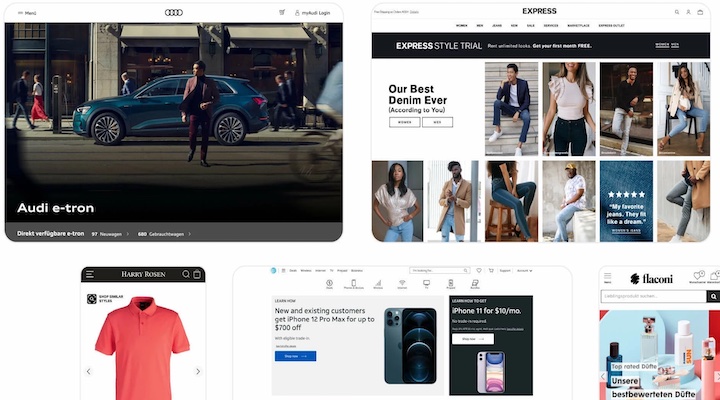Expanding online sales into foreign markets remains one of the biggest growth drivers for businesses. As Visa Global Merchant eCommerce Study shows, 87 per cent of merchants believe that expanding online sales into foreign markets remains one of the biggest growth drivers.
While cross-border e-commerce has taken a hit due to Covid-19 and international political tensions, global expansions are again open for business – and a top priority for 40 per cent of online merchants, according to 2022 eCommerce Trends by Verifone.
Record-breaking e-commerce
The staggering growth in online shopping is the critical driver in multi-country expansions.
Companies that have quickly moved from physical to digital sales accumulated double-digit growth between 2020 and 2021 in domestic and foreign operations, as demonstrated by Deloitte Global Powers of Retailing 2022. The record-breaking trends of digital commerce adoption also align with eMarketer predictions: The share of e-commerce sales will keep climbing yearly and is expected to reach 24.5 per cent of retail sales worldwide in 2025.
As the pivot to online shopping becomes a permanent fixture of commerce, businesses are exploring the window of opportunity to grow abroad as fast as possible.
Shaping your cross-border e-commerce strategy
An e-commerce-focused market entry is far from a one-dimensional strategy, encompassing a spectrum of options. Direct-to-consumer (D2C), as the business model of selling products directly to consumers and therefore bypassing third-party intermediaries, provides the ideal market entry option whereby you can:
- Control brand messaging and consumer engagement.
- Create direct access to customers and their data.
- Gain higher margins and strengthen brand loyalty.
D2C comes in different flavours. Companies can go D2C globally from a single website to target geographically close markets that share a common language, such as Australia and New Zealand. Alternatively, companies can localise e-commerce sites and touchpoints, which requires more effort but is ideal for tailoring customer experiences.
If you decide to localise languages, data, channels, currencies and customer experiences, you need to factor in how to handle these complex requirements in your e-commerce backend.
Composable commerce handles the complexity of cross-border e-commerce
Think anew when defining the technical requirements for your global ambitions. Many e-commerce solutions out in the market, known as monolithic or legacy platforms, are too inflexible and antiquated and therefore unsuitable for complex cross-border initiatives. Instead, composable commerce systems perfectly fit the global landscape businesses face today.
Composable commerce, as the name suggests, facilitates a best-of-breed approach by combining (or “composing”) components into a custom application built for specific business needs. Using the principles of MACH architecture (microservices-based, API-first, cloud-native and headless commerce), composable commerce provides a flexible, modular, scalable and customisable ecosystem to stay ahead of customers’ demands.
This new paradigm helps hundreds of companies to expand internationally for the first time or manage existing multi-country units more effectively, including:
- Audi, the next-gen automaker, enables in-car commerce in 26 countries after implementing a location-independent product information management (PIM) system to maintain product data.
- Danone, the global nutrition company, implemented D2C sales based on composable commerce to address the baby formula shortage in Europe in 2013 and most recently during the Covid-19 pandemic.
- Emma, a D2C mattress brand, adopted composable commerce to choose the best solution for each application, benefitting from an easily adaptable backend for its global ambitions. Now, the company sells products in more than 30 countries.
With cross-border e-commerce up for grabs, companies investing in solutions such as Commercetools Composable Commerce will be best positioned to expand beyond domestic markets successfully.
Learn how you can expand internationally and/or manage existing foreign units with composable commerce and MACH in the white paper On the Road to Cross-Border eCommerce, co-authored with Deloitte Digital.






